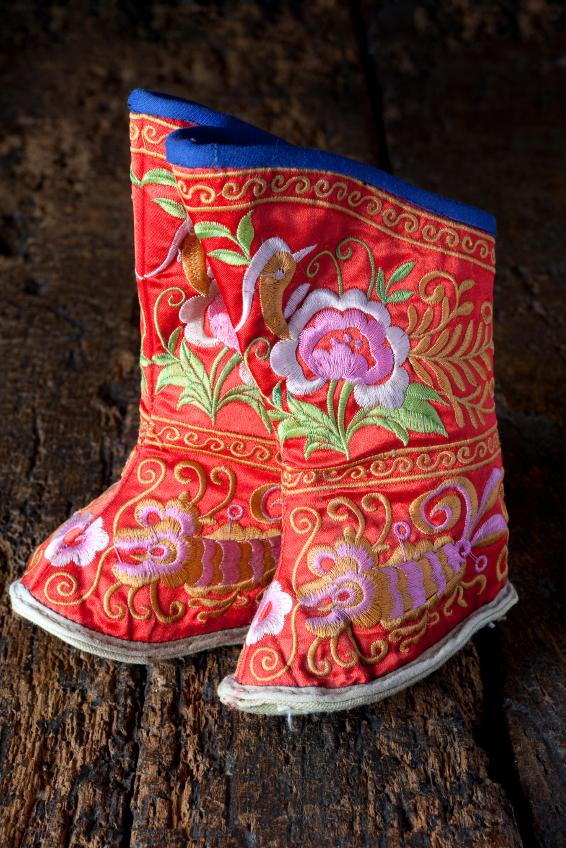The History of Foot Binding in China
posted: Feb. 18, 2016.

For what seemed to be around ten centuries, successive generations of Chinese women had to endure a practice wherein as children, their feet were systematically broken and shaped in such a way that they resembled hooves. The tradition was called foot binding.
HISTORY
The first ever recorded foot binding occurred in the Five Dynasties and Ten States period in the 10th century. The story starts with an emperor who had a favourite concubine, a dancer who built a gilded stage in the shape of a lotus flower. When she bound her feet into a hoof-like shape and danced on the lotus, the practice became very fashionable. Other concubines attempted to imitate her in order to gain the emperor’s favour as well. Eventually, foot binding (from the royal court) spread throughout China, starting from the south of the country, towards the north.
BASICS
During the 12th century, foot binding had already become much more widespread. By the early Qing Dynasty (mid-17th century), every girl who wished to wed had her feet bound. The only people who didn’t get to bind their feet were the very poor (ethnic Hakka people), and women who worked in the fishing industry because they had to have normal feet in order to keep their balance while in boats. Girls had their feet bound from ages four to six years old. Girls who were younger couldn’t endure the pain, and those who were older than six would already have large feet.
PROCESS
Foot binding occurred as a ritualistic ceremony accompanied by other traditions intended to ward off bad luck. The girls’ toes had to bended underneath the sole with the help of very long ribbons to wrap their feet all the way to the ankle. The idea was to keep breaking the foot whenever it grew too large – a process that usually took between two and three years. The feet, then, would be bound for the rest of the girl’s life. The girls naturally developed a funny manner of walking – almost as if they really had hooves. In order to facilitate moving around, women with bound feet had strong muscles in their hips, thighs and buttocks – and these characteristics were considered physically attractive to the Chinese men of that era.
GOING OUT OF FASHION
In the 19th century, towards the end of the Qing Dynasty, Western countries were able to colonize China and Western people started moving to the country. Western women, especially the wives of Christian missionaries, were strong advocates against the practice. Chinese intellectuals who studied abroad in Europe and North America returned to China to abolish the old practice. A lot of girls who had their bound in order to become marriageable were abandoned by their husbands because foot binding was no longer fashionable. In bigger cities, some people would catch women with bound feet and cut off their bindings – a humiliation because these women would never show their bare feet to anyone. Eventually, the process that began with a lot of pain and tears ended the same way. In 1949, foot binding was completely gone except in a few remote, mountainous areas in the country.